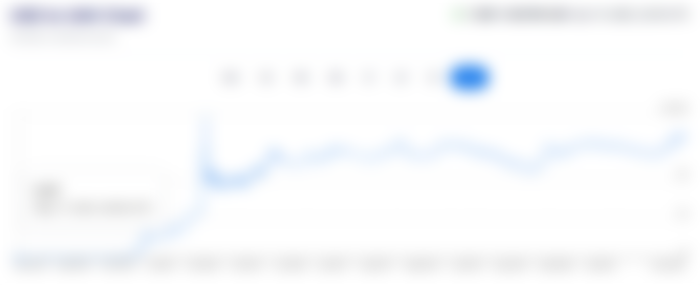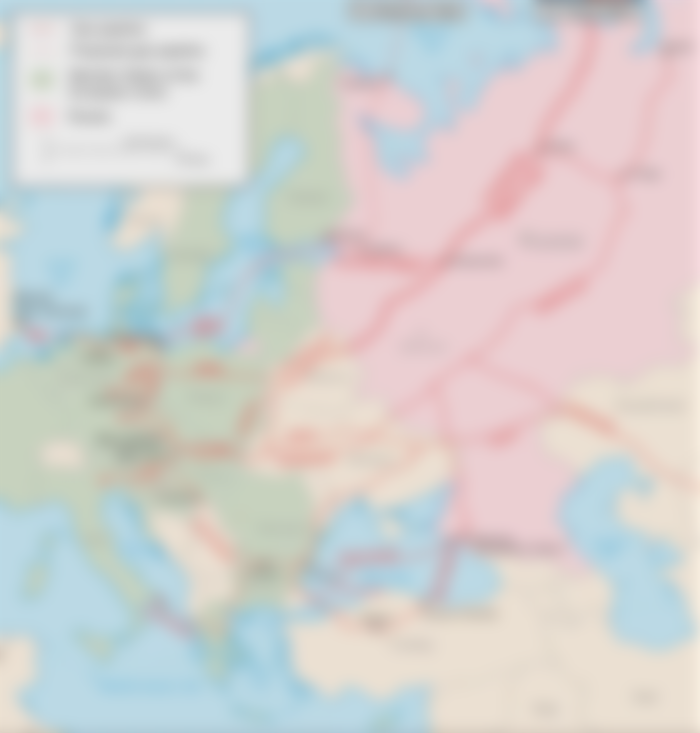Can Ukraine's economy afford the war with Russia?

Ukraine is a remarkably poor country. Like seriously, the economy is terribly bad. In 2019 the GDP was only 155,5$ Billion. Just above Kuwait and below Hungary. In fact, Ukraine has been known as the poorest country in Europe for a while now, with an annual GDP per capita of only 3.726$. This is surprising given that just a couple of decades ago it was the main breadbasket in Europe and even pushed Hitler to postpone his attack on Moscow during WW2 to make a U-turn back towards securing Ukraine’s wheat for feeding the Wehrmacht troops during winter.
After surviving the Holodomor famines which killed millions thanks to Stalin’s stupid economic ideas and experiencing the worst nuclear accident in history when Chornobyl’s reactor blew up, Ukraine saw itself as independent and alone once the Soviet Union was dissolved in 1991. Hence, most of the structure of modern Ukraine has of course been influenced by its Soviet past.

Gdp comparison ex soviet countries, noahpinion
In this blog, we have previously talked about the economy of Russia and how through commodity arbitrage fortunes were made instantly, as those close to the sources of power managed to buy cheap assets to the state at the soviet pre-settled prices or fraudulently auctioned ones, to later release these same commodities at much higher prices in global markets and cash in the difference. In other cases, they just acquired the highest productive factories and enterprises and started selling the products abroad at much higher unregulated prices.
Ukraine was possibly the nation where the transition went the most terribly wrong, as corruption proved to be more resilient than in other countries, where at least, it got somewhat better with time. While in Ukraine the government and institutions haven’t managed to restore confidence or create a favorable business environment to attract foreign capital. These are some of the main reasons Ukraine has not yet, despite many attempts, entered either NATO or the European Union. The country was in for a serious shock throughout much of the '90s, as Ukraine's economic woes have dragged the country forward ever since it switched to privatization and free markets.
During the initial post-soviet period, the Russian rouble suffered from hyperinflation, and being Russia it’s largest trade partner and main market for Ukrainian currency, the Karbovanec, their currency also entered hyperinflation. The hryvnia was introduced in 1996 and has so far lost about 90% of its value against the USD, Ukraine is a raw material and agricultural exporter, countless devaluations have taken place to gain a competitive advantage, or at least that’s the theory as I don’t see Argentina nor Venezuela very competitive after killing their currencies to gain competitive advantage. Inflation has been a constant for Ukraine which has dragged its real growth, although it has improved mildly thanks to increased prices for commodities recently. So then we ask ourselves.

usd/uah pair 10yr price graph, XE
What do Ukrainians do for a living?
The exports of Ukraine’s economy indicated on the webpage of the World Trade Organization as of 2018, are the following. Ukraine was the world's largest exporter of oilseeds, accounting for 3,7$ Billion. Corn worth 3,5$B, Common wheat and meslin, almost 2,9$B. Iron ore and other derivatives 1,6$B. But the most surprising highlight is Russia. Yes, their enemy is their largest trade partner, measured as an individual country, because otherwise, it would be the European Union. Nonetheless, when we look at imports the picture gets even clearer when you see that Ukraine imports most of its fuel and oil derivatives worth 5,5$ Billion and 3,1$ Billion of Natural gas, a big proportion of which came from Russia. This is logical given its geographical location and infrastructure like pipelines built during the soviet union facilitating the flow of fuels between them.

wheat production areas map, Wikipedia
Nevertheless, Ukraine has reduced its dependency on Russia and today just 20% of its natural gas and fuel imports come from the Russian border, down from 2/3 in 2012. In December 2020, the European Union was the primary destination of Ukraine’s trade, representing 40% of the total foreign trade. Since 1991 Ukraine was a member of the Commonwealth of the Independent States, which was an organization to provide former Soviet republics with a space for free trade and movement of labor, but they ended their participation in 2018, in a push to embrace the other side of the aisle instead. Ukraine also produces some types of capital goods, in fact, they are especially well known for producing entirely the Antonov plane in the country.
Although to be fair, it's somewhat of a failed aircraft, without much global demand. Antonov didn’t manufacture a single plane for 4 years until 4 new orders were made in 2021. It's true that the Antonov has broken world records in transportation capacity, but it also consumes a lot more fuel because it carries 6 massive turbofan engines, which makes the plane ideal for occasions in which customers need fast and big deliveries, for infrastructure projects close to the deadline for instance. When time is prioritized above money. But for normal shipping services, the plane hasn’t been able to compete with Boeing and Airbus on an international scale, who offer much more efficient consumption, cheaper and easier maintenance if mechanical issues appear, and a much liquid market if the buyer intends to lease the aircraft or sell it. Nonetheless, the productivity coming from Ukraine’s aerospace industry is not meaningful as it only accounts for 1,1% of GDP.

ukraine import sources, brittanica
Indeed, Ukraine’s biggest imports after fuel and gas are Cars (2,64$ B) and healthcare drugs and other medical materials (1,8$B). Ukraine is also one of the top 10 exporters of defense. But they may rethink that exporting strategy pretty soon. But possible, the biggest drag for the Ukrainian economy is its many issues discouraging foreign investments. To mention a few. Ukraine is ranked 117th by the World Bank in investor protection, as its legal environment falls short of being reliable. It takes 70 days and 10 procedures to register a property in Ukraine, which makes it the 149th fastest place in the world. Construction permits? Ukraine ranks 182nd in ease for dealing with them, it can take more than a year and it would cost you around 1200$, well above the 78$ OECD average.
To finish, it's worth mentioning the issues around trading in Ukraine. Export documents take time to obtain and tariffs are quite discouraging for foreign enterprises, as explained on the United States Trade Agency website. Ukraine even halted imports of American agricultural products in 2010 to boost their own home market. As we see, the picture is quite dire and Ukraine doesn’t seem like the ideal place to do business with. Which inevitably pushes us to ask the question.
Is Ukraine financially fit and ready to afford for current war with Russia?
If we want to know the current state of Ukraine’s finances in a smart way, the first place we have to go is Ukraine’s central bank webpage. Considering their dependence on foreign trade to cope with their domestic needs, it is crucial to address their stocks of foreign reserves and how much outstanding government debt is. But most importantly, if they have the capacity to borrow more to finance war efforts against Russia. The first important factor to consider is currency. The hryvnia doesn’t have meaningful demand outside of Ukraine, which means that excessive increases in its supply to fund government spending can provoke significant inflation spikes and devaluation of the currency.

Hence, a lot of the country’s investments are financed with foreign currencies. Especially the USD. According to the data from Ukraine’s national bank, the country has around 125$ Billion of gross external debt, 55,6$ Billion from the Public Sector, and 69,4$ Billion from the private sector. 69,4% of its GDP, down from 81% at the start of 2021, which means Ukraine is still highly leveraged under The World Bank’s standards, which state that levels above 77% severely harm a country’s economic growth. Ukraine faces a considerable problem with its sovereign debt, which was present even prior to the pandemic, and just got worse after it. 61% of Ukraine’s debt is in USD, 23% in Euros, and only 3,7% in hryvnias. A surprising piece of data is that Cyprus, yes you heard well, Cyprus. Is Ukraine’s main creditor with 47% of foreign loans to the private sector.
Yet, Ukraine only has 30,9$ Billion worth of foreign reserves. As written on the website of the Central Bank, just enough to cover 4 months of imports. Being Ukraine a country that will need foreign currency to finance its war against Russia, what we should pay attention to is the inflow of foreign currency. Which comes from net exports. Looking at the balance account as of November 21, Ukraine had a deficit of 1,3B USD. There are many ways to calculate leverage, but the most important part of leverage is knowing if you’re able to pay back with money coming from your cash flows. So we will better use its USD-based income to USD debt to determine Ukraine’s leverage, which resembles the Debt to EBITDA ratio in corporate finance.

russia forex reserves, Wikipedia
So, In 2021 Ukraine currently had a 1,3B USD deficit and a net debt of 94,5B USD. Being a negative number, we can’t calculate leverage, so we’ll pick the 2020 number which was a positive 4,3B USD. This calculation is not perfect because we picked debt and income from different years and Ukraine’s debt was higher in 2020 than in 2021, but it will still work out to help us understand the country’s leverage. Dividing total debt by net inflows of USD, our Debt to income ratio has been 21,9. This in essence means, that Ukraine will need, at current levels of GDP, 21,9 years to repay its debts. On the other hand, Russia has a gross external debt of 478,2$ Billion, but its central banks hoard 497$ Billion in Foreign exchange reserves if we also add their gold reserves it accounts for a total of 630,6B USD. Meaning Russia has an account balance surplus of 152,4$ Billion, but on top of that, they reached a record 120,3$ Billion in trade surplus, which means Russia’s foreign exchange cash flows are healthy and positive.
In comparison, Russia is well-positioned to boost its defense spending if needed, while Ukraine is even close to bankruptcy without ramping up its defense efforts. We could also argue that western economies with record levels of debt would struggle to finance a large-scale aid program to Ukraine, at a time many of them are starting to raise interest rates to tame domestic inflation. Plus, even Russia has a strong interest in avoiding war. Ukraine remains a key partner in the transport of natural gas to Europe and damaging relations with the EU are at risk.

By the way, did you know that Ukraine has the third-largest nuclear weapons stockpiles? Indeed it represented 1/3 of the whole Soviet nuclear arsenal. However, in 1994, when Ukraine signed the Nuclear Non-Proliferation Treaty, it agreed to disarm the missiles and use the fuel for domestic energy production. It would have been interesting to see what situation the country would be in today if they had kept the nukes…







